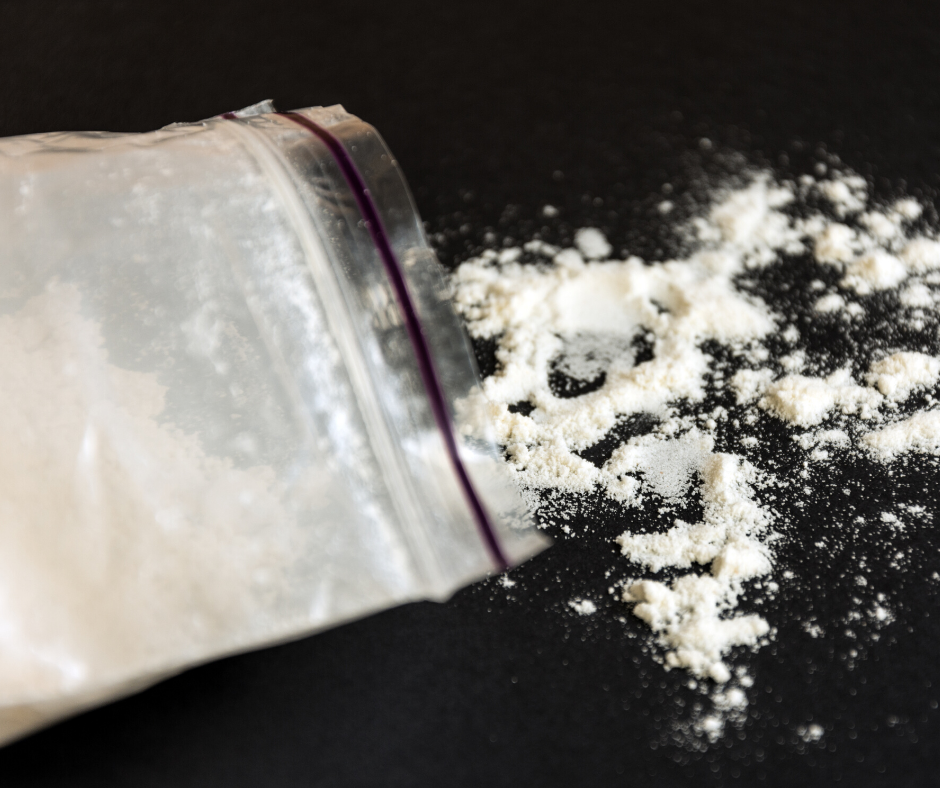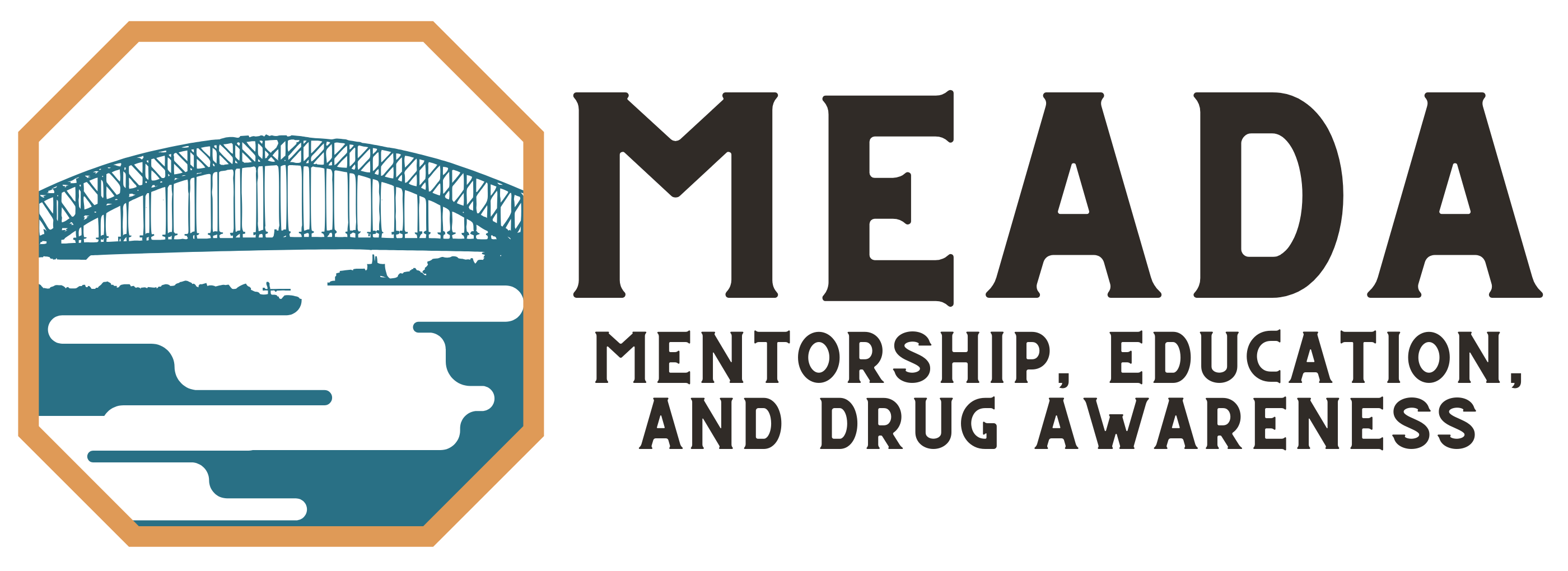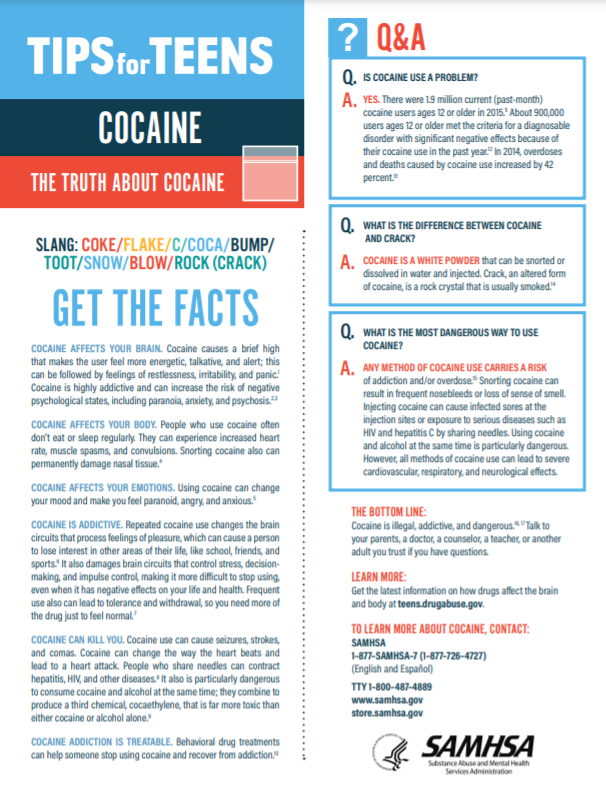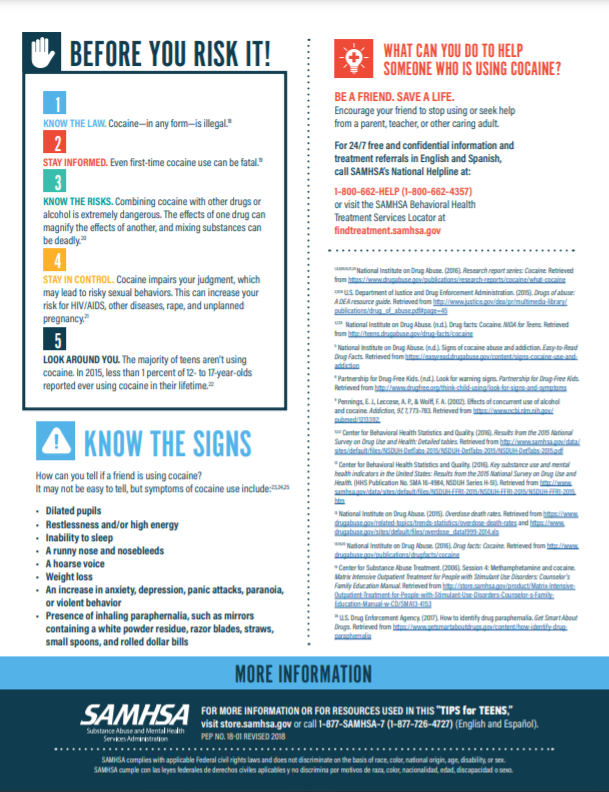COCAINE
Common Drug Names:
Coke, blow, crack, rock, snow

Cocaine increases levels of dopamine in the brain, heightening the brain’s reward circuit which controls feelings of pleasure. Normally, dopamine is recycled back into the brain to shut off the signal between nerves. Cocaine prevents this process, causing large amounts of dopamine to build up in the brain. The short-term effects are:
As use continues, eventually the reward circuit adapts to the excess of dopamine and becomes less sensitive to it. People need to take stronger and more frequent doses to feel the same high and to obtain relief from the symptoms of withdrawal.
The short-term health impacts of cocaine include:
- constricted blood vessels
- dilated pupils
- nausea
- raised body temperature
- hypertension
- fast or irregular heartbeat
- tremors and restlessness.
Long-term effects often depend on the method of use and can include:
- Snorting: loss of smell, nosebleeds, runny nose, and problems with swallowing
- Consuming by mouth: severe bowel decay from reduced blood flow
- Needle injection: high risk for contracting HIV, hepatitis, and other bloodborne diseases, skin or soft tissue infections, and scarring/collapsed veins
- Smoking: cough, asthma, respiratory distress, and higher risk for infections such as pneumonia
Because cocaine impairs judgement, even non-needle cocaine use can lead to contraction of HIV or hepatitis from risky sexual behavior.
Other long-term effects of cocaine use include being malnourished and movement disorders. People also report irritability and restlessness from cocaine binges and severe paranoia, including auditory hallucinations.
Cocaine overdoses occur when a person uses enough of the drug to produce serious adverse effects, life-threatening symptoms, or death. Intentional or unintentional, overdoses will likely need medical intervention. Symptoms include an irregular heartbeat, heart attacks, high blood pressure, seizures, strokes, difficulty breathing, raised body temperature, hallucinations, and extreme agitation or anxiety. There is no specific medication to reverse an overdose, so medical intervention involves supportive care and symptomatic treatment.
Cocaine withdrawal brings mostly psychological symptoms, including;
- difficulty concentrating
- slowed thinking
- depression
- fatigue
- restlessness
- inability to experience sexual arousal or pleasure
- unpleasant dreams
- insomnia
- suicidal thoughts or actions
Withdrawal can also include increased appetite, chills, tremors, muscle aches, and nerve pain.
Cocaine addiction treatment can be completed on an outpatient basis, but usually requires medical detox. This is especially necessary if a person has relapsed during past rehab attempts. If a person suffers from any concurrent mental health disorders, medical detox is an opportunity to both manage withdrawal and meet mental health treatment needs. People who attempt to stop cocaine use after addiction can suffer from severe depression, mood swings, and suicidal thoughts. Inpatient medical detox can provide a safe environment for these to occur.
There are no FDA-approved medications to treat cocaine withdrawal, but there are medications to help treat the symptoms. Propranolol can help stabilize cardiac issues and antidepressants can reduce depression and anxiety. Continued addiction treatment via therapy and support groups can help prevent relapse and provide a safe place to return to if relapse occurs.
SAMHSA's National Helpline - 1-800-662-HELP (4357)
SAMHSA’s National Helpline is a free, confidential, 24/7, 365-day-a-year treatment referral and information service (in English and Spanish) for individuals and families facing mental and/or substance use disorders.
SAMHSA's Behavioral Health Treatment Services Locator
Narcotics Anonymous
Narcotics Anonymous offers recovery from the effects of addiction through working a twelve-step program, including regular attendance at group meetings. The group atmosphere provides help from peers and offers an ongoing support network for addicts who wish to pursue and maintain a drug-free lifestyle. Find an NA meeting near you.
For Providers: Minnesota Alliance of Rural Addiction Treatment Programs
DRUG TRENDS
Cocaine availability and use in the United States rose between 2016 and 2017, and this rise is likely to continue according to the Drug Enforcement Administration. This is propelled by increased availability and lower cost to produce and obtain cocaine. The increased presence of fentanyl in the cocaine supply, likely related to the opioid crisis, is accelerating the rate of cocaine-involved deaths.
The National Institute for Drug Abuse, NIDA, table below shows cocaine trends and statistics from December 2020.



